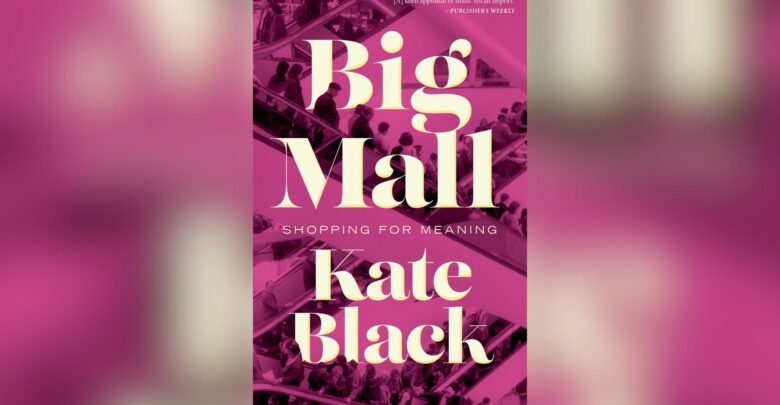Finding hope among capitalist-dread in U of A alumna’s debut book, “Big Mall”
Kate Black reflects on the history of shopping and what life was like growing up in Edmonton, a city overshadowed by its notorious landmark, West Edmonton Mall.
 Supplied
SuppliedWe often take malls for granted — especially if living in Edmonton. A striking feature of the city is West Edmonton Mall (WEM). Home to over 800 stores and grandiose attractions, the mall attracts around 30 million visitors each year.
But for many born-and-raised Edmontonians, WEM has lost its appeal. As children, it was a fun place for birthday parties, and as teenagers, it was a cool place to hang-out. But for many adults, it’s a place we find ourselves returning to, despite the dreaded, overstimulating experience that WEM often is.
University of Alberta and Gateway alumna Kate Black dissects the age-old question: why do we keep going to malls if they make us feel bad? In her non-fiction debut, “Big Mall: Shopping for Meaning,” Black reflects on the history of shopping and the role WEM has played in her life. She finds that malls have become symbols of both capitalist-dread and — surprisingly — hope.
Black moved to Vancouver after graduating from the U of A in 2016 with a Bachelor of Arts in women’s and gender studies. She then started her Master’s in Creative Writing at the University of British Columbia. While trying to come up with writing ideas, she noticed that most people know Edmonton solely because of WEM.
“I thought it was interesting that, to my knowledge, no one had written a full book about WEM,” Black explained. “Not just retelling facts about it, but really thinking about what it means to grow up in a space like Edmonton that’s overshadowed by a mall.”
“Big Mall” captures Black’s conflicting feelings toward WEM and how malls can provide hope
Black said that she was interested in what it means to grow-up where capitalism feels inevitable. In her writing approach, she thought about what events happened at WEM and how people have socialized at the mall.
“It took me in a lot of interesting directions. Like learning about how teenagers built communities in the mall. Or how people connected to the dolphins in the mall in a way that was meaningful but also tragic,” she said.
This is a running-thread throughout the book — things that are both meaningful and tragic at WEM. Black thinks many have conflicting feelings about the mall, especially when considering the 1986 Mindbender crash, or WEM’s general existence.
“I feel really euphoric when I go to WEM. But I also feel really overstimulated, stressed, and existentially concerned. I was trying to write a book that captured all these feelings.”
Black began seeing WEM in a new light through writing her book. Although she held a cynical view of malls because they produce and encourage over-consumption, she realized there’s a hopeful aspect to their role in society.
“I started learning more stories about how people connect to each other and make meaning out of their lives through the mall,” Black explained. “It shows us people can achieve a lot of meaning out of life and they have a lot of opportunities to connect with each other.”
Black hopes readers will understand that malls are “so much more complex, interesting, and sometimes even hopeful, than we often give them credit for.”




